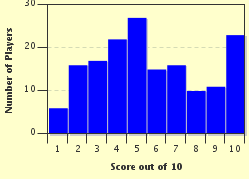Quiz Answer Key and Fun Facts
1. Robert Catesby was the leader of the Gunpowder Plot of 1605. What fate did he suffer for his involvement?
2. The building of the Banqueting House, in London's Whitehall, began in 1619. Which architect designed the building?
3. 1625 saw the marriage of King Charles I to Henrietta Maria, who came from which country?
4. In 1633 William Laud became one of the most powerful men in England when he was appointed to which post?
5. The first major battle, in 1642, of the First English Civil War took place in Edge Hill, in which Midlands county?
6. The book commonly called 'Leviathan' was published in 1651. Which philosopher wrote it?
7. Which organisation was granted a Charter by King Charles II in 1662, entitling it to use the word 'Royal' in its name?
8. The 'Popish Plot' of 1678 was a conspiracy dreamed up by which of these men?
9. The first university museum was opened in 1683, and named for Elias Ashmole, who donated his collection. In which city was it established?
10. 1699 saw the market at Billingsgate officially recognised by an Act of Parliament. It was famous for the sale of which of these?
Source: Author
rossian
This quiz was reviewed by FunTrivia editor
bloomsby before going online.
Any errors found in FunTrivia content are routinely corrected through our feedback system.

